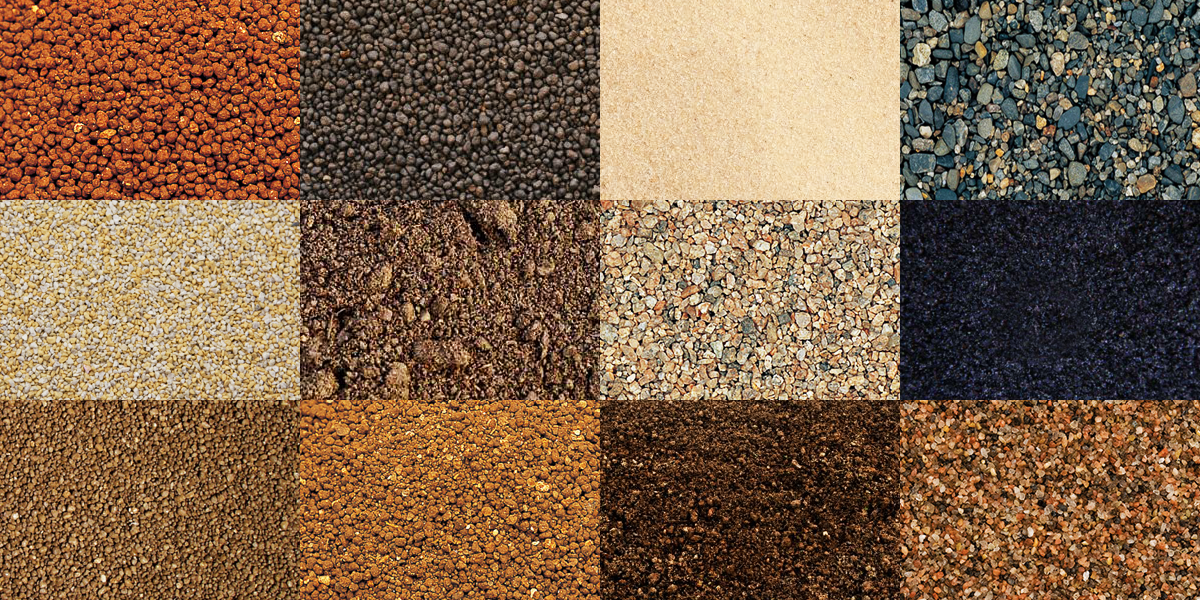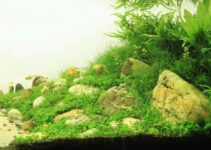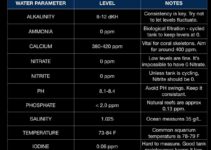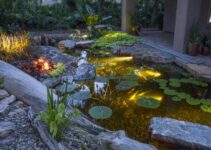The Ultimate Guide to Aquascape Substrate Choices for Community Tanks With great pleasure, we will explore the intriguing topic related to The Ultimate Guide to Aquascape Substrate Choices for Community Tanks. Let’s weave interesting information and offer fresh perspectives to the readers.
The Ultimate Guide to Aquascape Substrate Choices for Community Tanks
Creating a thriving community tank is a rewarding experience, but choosing the right substrate is crucial for both aesthetics and the well-being of your aquatic inhabitants. Substrate serves as more than just a base for your aquascape; it plays a vital role in water parameters, nutrient cycling, and overall tank health.
This comprehensive guide will explore the diverse world of aquascape substrates, empowering you to make informed decisions for your community tank. We’ll delve into the pros and cons of each option, offering valuable insights to help you achieve the perfect balance of beauty and functionality.
1. The Power of Substrate: More Than Just a Pretty Base
Substrate isn’t just about visual appeal; it significantly impacts your tank’s ecosystem. Here’s how:
- Water Chemistry: Different substrates can alter the pH and hardness of your water, influencing the health of your fish and plants.
- Nutrient Cycling: Beneficial bacteria colonize substrate, breaking down waste and preventing harmful ammonia and nitrite buildup.
- Plant Growth: Certain substrates provide essential nutrients for plant growth, promoting lush and vibrant aquascapes.
- Aesthetic Appeal: Substrate sets the stage for your aquascape, providing a foundation for plants, rocks, and driftwood.
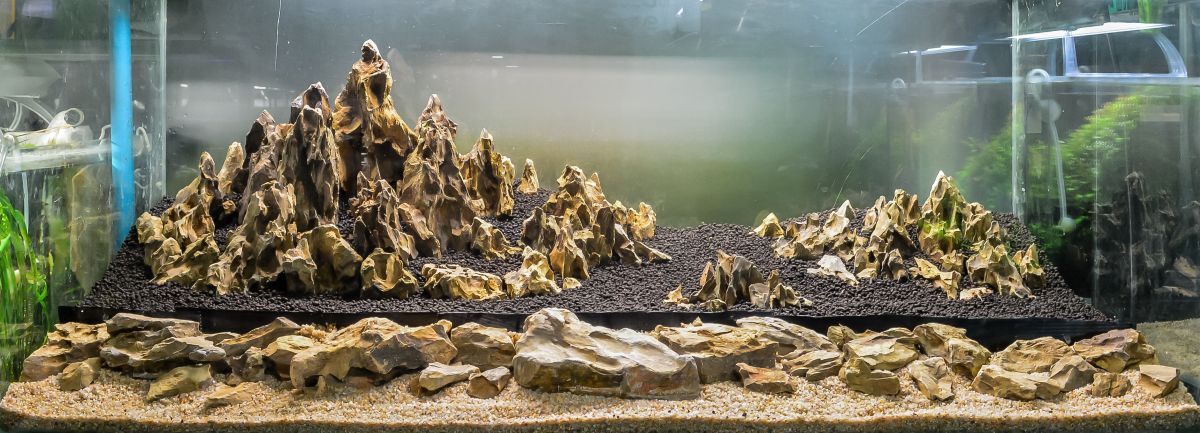
2. Navigating the Substrate Landscape: Key Considerations
Before diving into specific substrate options, consider these crucial factors:
- Tank Size and Type: The size and type of your tank will influence the substrate’s depth and weight.
- Fish Species: Different fish species have specific requirements, such as substrate size and composition.
- Plant Choice: Your desired plants will dictate the substrate’s nutrient content and pH compatibility.
- Budget: Substrate options range in price, so consider your budget and desired level of investment.
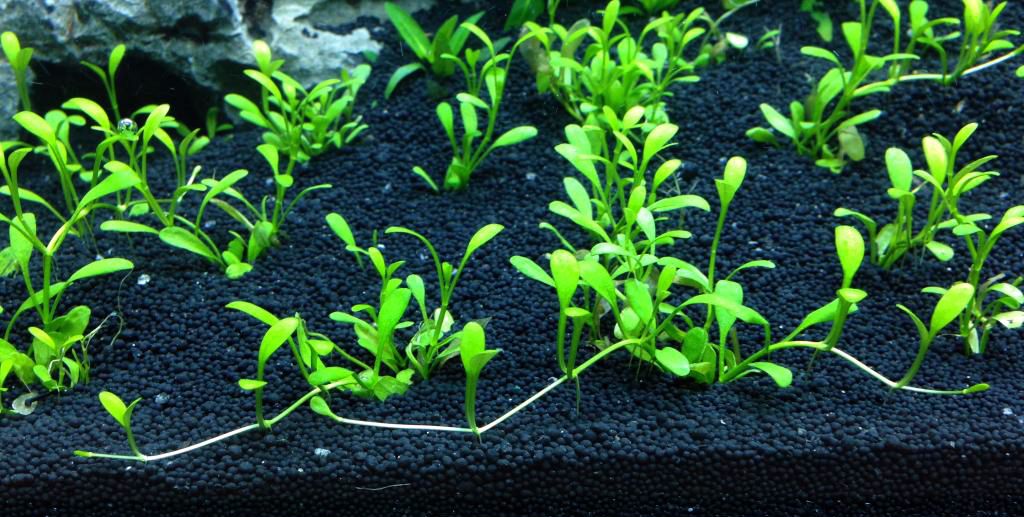
3. Unveiling the Top Substrate Choices for Community Tanks
Let’s explore the most popular substrate options and their impact on your community tank:
3.1. Gravel: The Classic Choice
Gravel is a timeless and affordable substrate option. It comes in various colors, sizes, and textures, offering versatility for your aquascape.
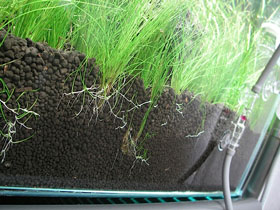
Pros:
- Affordable: Gravel is generally the most budget-friendly substrate choice.
- Durable: Gravel is resistant to wear and tear, making it a long-lasting option.
- Easy to Clean: Gravel is easy to vacuum and maintain, ensuring a clean tank environment.
- Wide Variety: Gravel is available in a wide range of colors and sizes to suit any aesthetic.

Aquascape Substrate Choices For Community Tanks Cons:
- Limited Nutrient Retention: Gravel doesn’t retain nutrients as well as other options, potentially impacting plant growth.
- Can Be Sharp: Some gravel types can be sharp, potentially injuring fish or damaging delicate plants.
- Not Ideal for Certain Fish: Gravel can be too large or too small for certain fish species, hindering their natural behaviors.
3.2. Sand: The Natural Look and Feel
Sand creates a natural and aesthetically pleasing substrate that mimics the look of a riverbed or beach.
Pros:
- Natural Aesthetic: Sand creates a realistic and inviting environment for your fish and plants.
- Soft and Gentle: Sand is soft and gentle on fish, ideal for bottom-dwelling species.
- Excellent for Burrowing: Sand is perfect for fish that enjoy burrowing, like Corydoras catfish.
- Supports Beneficial Bacteria: Sand provides a large surface area for beneficial bacteria to colonize, promoting healthy water parameters.
Cons:
- Can Be Difficult to Clean: Sand can be challenging to vacuum, especially for fine sand types.
- May Cloud Water: Fine sand can be stirred up easily, clouding the water and requiring frequent cleaning.
- Can Be Compacted: Sand can compact over time, limiting water flow and oxygen penetration.
3.3. Black or Dark Substrate: Enhancing the Aquascape
Dark substrates like black sand or black gravel create a striking contrast, showcasing the vibrant colors of your fish and plants.
Pros:
- Enhances Color: Dark substrates make fish and plants appear more vibrant, adding depth and dimension to your aquascape.
- Conceals Waste: Dark substrates help to hide fish waste, maintaining a cleaner visual appearance.
- Versatile: Black substrates can be used with various plant and fish species, creating a modern and elegant look.
Cons:
- Can Be Difficult to Maintain: Dark substrates can show dirt and debris more easily, requiring more frequent cleaning.
- May Discolor Water: Some dark substrates can release tannins, slightly discoloring the water.
3.4. Flourite and Other Nutrient-Rich Substrates:
Flourite and similar substrates are designed to provide essential nutrients for plant growth, promoting lush and vibrant aquascapes.
Pros:
- Supports Plant Growth: These substrates release nutrients over time, promoting healthy plant growth and vibrant colors.
- Ideal for Planted Tanks: Flourite is a popular choice for planted tanks, providing a nutrient-rich environment for aquatic plants.
- Long-Lasting: Flourite and similar substrates can last for years, reducing the need for frequent replacements.
Cons:
- Higher Cost: Flourite and similar substrates are more expensive than gravel or sand.
- Can Raise pH: Some nutrient-rich substrates can raise the pH of your water, requiring careful monitoring and adjustments.
- Not Suitable for All Fish: Nutrient-rich substrates may not be suitable for all fish species, especially those sensitive to high pH levels.
3.5. Specialized Substrate Options: Catering to Specific Needs
For those seeking unique and specialized solutions, these options offer specific benefits:
- Aquasoil: Aquasoil is a popular choice for planted tanks, providing a nutrient-rich environment that promotes healthy plant growth.
- Ceramic Substrate: Ceramic substrates offer excellent filtration and water quality, providing a stable environment for your fish and plants.
- Lava Rock: Lava rock provides a porous surface area for beneficial bacteria to colonize, promoting a healthy tank ecosystem.
- Coco Fiber: Coco fiber is a natural substrate that offers a unique aesthetic and excellent nutrient retention.
4. Creating the Perfect Substrate Blend: A Personalized Approach
For a truly customized aquascape, consider creating a substrate blend that combines different options to meet your specific needs. Here are some popular combinations:
- Gravel and Sand: Combining gravel and sand offers a visually appealing blend with excellent water flow and nutrient retention.
- Gravel and Flourite: This combination provides both aesthetics and nutrient-rich support for plant growth.
- Sand and Aquasoil: This blend creates a natural look and feel while offering optimal conditions for plant growth.
5. Substrate Depth: Finding the Right Balance
The depth of your substrate is crucial for both aesthetics and functionality. A general guideline for community tanks is 2-3 inches of substrate.
- Deeper Substrate: Deeper substrates offer better nutrient retention and provide more space for beneficial bacteria to colonize. However, they can be heavier and require more careful maintenance.
- Shallower Substrate: Shallower substrates are easier to clean and maintain, but they may not offer the same level of nutrient retention.
6. Substrate Placement: Achieving a Balanced Aquascape
The placement of your substrate is crucial for creating a visually appealing and functional aquascape. Here are some tips:
- Gradual Slope: Create a gradual slope from the back of the tank to the front, adding depth and visual interest.
- Varying Textures: Combine different textures and colors to create a visually appealing and stimulating environment.
- Consider Fish Behavior: Place substrate strategically to cater to the natural behaviors of your fish, providing areas for burrowing, hiding, and spawning.
7. Maintaining Your Substrate: Keeping Your Tank Pristine
Regular substrate maintenance is essential for maintaining a healthy and aesthetically pleasing tank. Here are some tips:
- Vacuum Regularly: Vacuum your substrate at least once a week to remove debris and waste.
- Test Water Parameters: Regularly test your water parameters to ensure they are within the optimal range for your fish and plants.
- Adjust Substrate Depth: Over time, your substrate may compact, requiring you to add more to maintain the desired depth.
- Replace Substrate: Replace your substrate every few years to ensure optimal water quality and prevent nutrient buildup.
8. The Substrate Revolution: Transforming Your Tank
Choosing the right substrate can dramatically impact your community tank’s aesthetics, health, and overall enjoyment. From the classic simplicity of gravel to the nutrient-rich power of Flourite, there’s a perfect substrate solution for every aquascape.
Remember, the key is to choose a substrate that meets the needs of your fish, plants, and your own aesthetic preferences. With careful planning and maintenance, your substrate will be the foundation of a thriving and visually stunning community tank.
9. FAQs: Unveiling the Answers to Your Substrate Questions
Q: How do I determine the right substrate size for my fish?
A: Consider the size and behavior of your fish. Larger fish may require larger gravel to prevent ingestion, while smaller fish can handle finer gravel or sand. Burrowing fish like Corydoras catfish thrive in sand.
Q: Can I mix different substrates?
A: Yes, mixing substrates can create a visually appealing and functional aquascape. Consider combining gravel and sand, gravel and Flourite, or sand and Aquasoil.
Q: How do I clean my substrate?
A: Use a gravel vacuum to siphon out debris and waste from your substrate. Avoid disturbing the substrate too much, as this can cloud the water.
Q: How often should I replace my substrate?
A: Substrate typically lasts for several years, but it’s a good idea to replace it every 2-3 years to ensure optimal water quality and prevent nutrient buildup.
10. Conclusion: The Foundation of a Thriving Community Tank
Substrate is more than just a base for your aquascape; it’s the foundation of a healthy and thriving community tank. By understanding the diverse options and their impact on your ecosystem, you can make informed choices that support your fish, plants, and your own aesthetic preferences.
Embrace the power of substrate to create a visually stunning and biologically balanced environment that will bring joy to you and your aquatic companions for years to come.
Closure The Ultimate Guide to Aquascape Substrate Choices for Community Tanks
Thus, we hope this article has provided valuable insights into The Ultimate Guide to Aquascape Substrate Choices for Community Tanks. We thank you for taking the time to read this article. See you in our next article!
